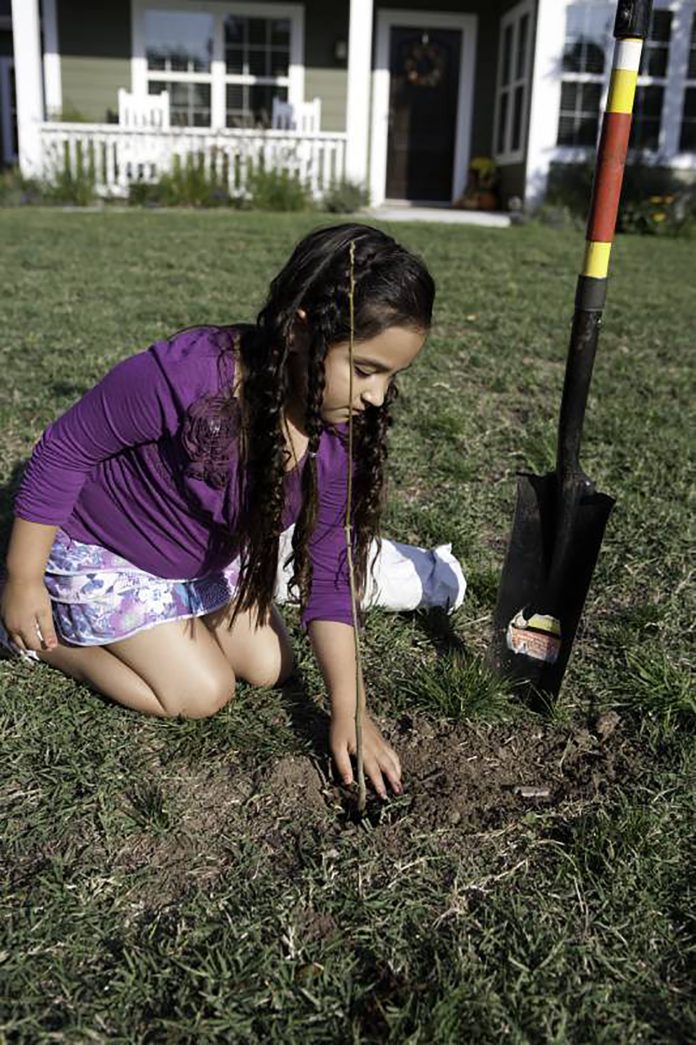

JEFFERSON CITY, Mo. – As Missouri continues to experience extreme drought, the Missouri Department of Conservation (MDC) encourages the public to implement a watering plan for trees, especially newly-planted seedlings. In the urban and suburban forest, where valuable trees shade homes, sidewalks and businesses, watering them now can prevent losing them altogether.
“Living plants are more than 50-percent water,” explained MDC Forestry Field Programs Supervisor Russell Hinnah. “Water taken up by tree roots feeds the tree and transpires through the leaves. A mature tree can move hundreds of gallons of moisture a day!”
When trees lose moisture through leaves and are not able to replace it, water stress develops. Windy conditions can even accelerate this stress. Water stress may not kill a tree outright, but it could weaken a tree and predispose it to other insect and disease problems. Water stress also reduces fruit and nut production.
Symptoms of water stress include leaf droop and the eventual drying and scorching of leaves, resulting in tree canopies turning brown.
“Some trees are dropping leaves to reduce water usage,” said Hinnah. “That doesn’t mean they are dying, but it does mean they’re thirsty and they may have gone dormant. Some species will regrow leaves if watered or if rains return.”
Hinnah advises people to water and mulch trees to help them through the drought.
“Trees and shrubs replenish water loss overnight and early in the day, so watering anytime except afternoon works best,” he said. “It stresses the tree less and less water evaporates.”
Slowly soaking the ground under the canopy of the tree allows roots more chances to absorb water. Hinnah advises against watering the foliage since it could result in fungal growth on the leaves and sunlight could scorch wet leaves if watered during the day. He also advises against watering a tree through a pipe stuck in the soil. Slow watering will cover a larger area and will reach all the absorbing roots.
“Use a soaker hose, sprinkler, or drip irrigation system,” Hinnah suggested. “For smaller trees, simply poke holes in an old hose or recycle milk jugs or other large containers by poking a few holes in the base and filling them with water. If possible, water from the trunk to the drip lines where the longest limbs end.”
Apply the equivalent of about two-inches of rainfall per week.
“If you’re using a sprinkler system, you can estimate this amount of water by placing several small containers under the canopy of your trees,” said Hinnah. “When the average depth in the containers equals two-inches, you’re done with that tree.”
Newly-planted trees are the most susceptible to water stress and should be monitored closely. Many times these trees have lost a percentage of their root system in the digging process and are not very efficient with water uptake.
Applying a ring of mulch around the tree trunk, not up against the trunk, helps retain moisture. Apply a three-foot-wide circle of mulch about three-inches deep ad keep it about three-inches from the trunk. Mulch keeps soil cool and adds nutrients.
Cracks in the soil indicate severe soil drying and add to drought stress for trees by allowing air to reach roots and subsoil to dry them out. Mulching or filling soil cracks with additional soil can help, but simply pushing in the sides of cracked areas can damage surface roots and expose a new layer of soil to sun and wind – creating dryer soil.
For more information on tree care, visit https://mdc.mo.gov/trees-plants/tree-care.



















